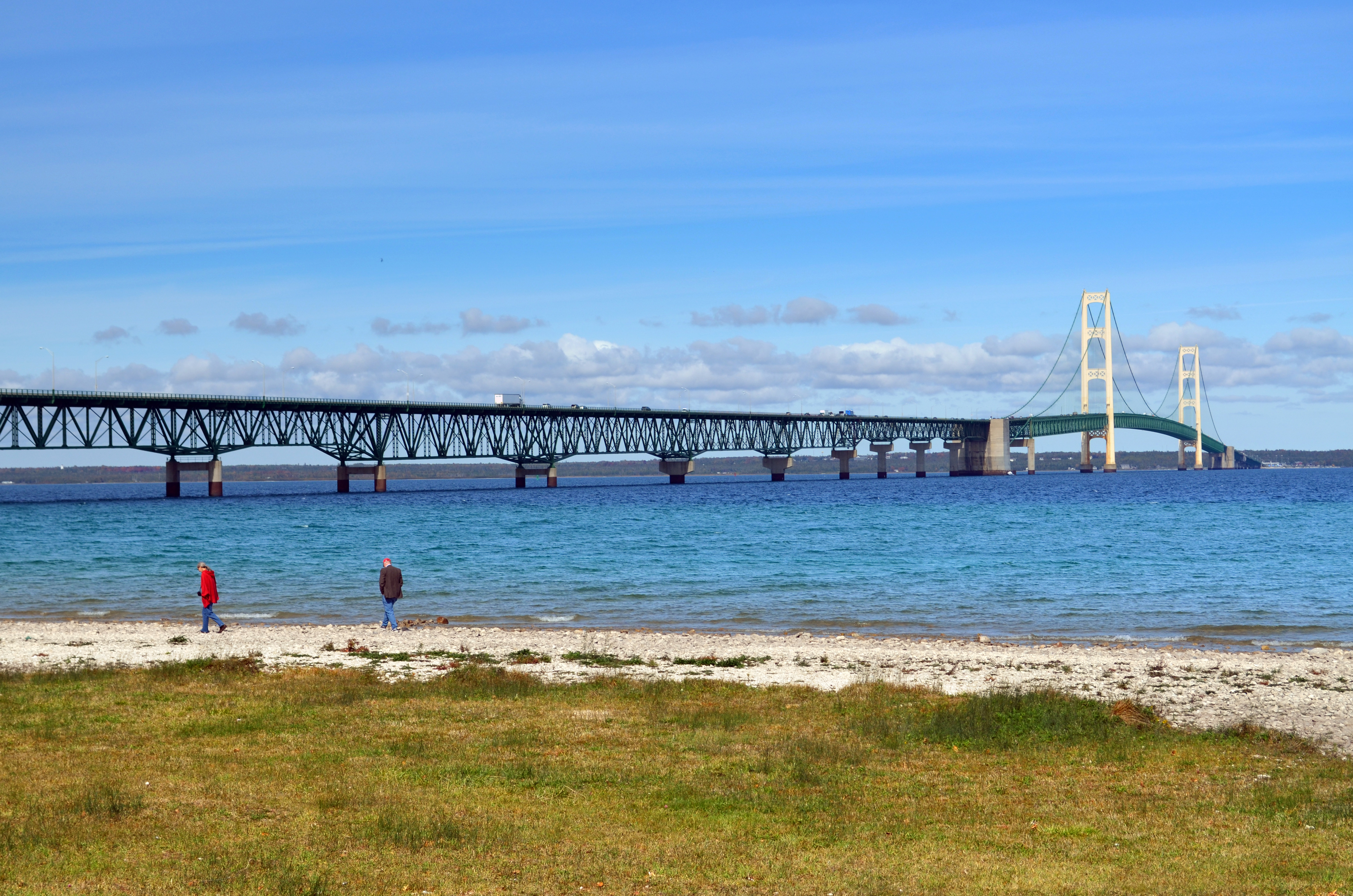The Straits of Mackinac: Connecting People, Places and so Much More
The region contains hundreds of islands and endless miles of pristine shorelines, as well as rich land ecosystems like boreal and deciduous forests.

The Straits of Mackinac are one of the most well-known locations in the Great Lakes region and are a conduit for trade, tourism, wildlife and much more. Yet many visitors may miss opportunities to explore the rich depths of the regions cultural and natural history.
What exactly is a strait?
Ecologically speaking, the area is rich in biodiversity. It contains hundreds of islands and endless miles of pristine shorelines, as well as rich land ecosystems like boreal and deciduous forests. The wetlands and reefs in the region are key breeding areas for many sportfish, for example the tasty commercially caught lake whitefish (a local delicacy). Several reefs such as Spectacle Reef and DeTour Reef have been found to be key sources of lake trout, who disperse across the Great Lakes but rely on the rocky areas in the Straits of Mackinac to lay their eggs. The narrow crossing here is also a major funnel for migratory songbirds, waterfowl and raptors. A flock of over 7,000 ducks, known as Redheads, congregates here in late fall and early winter. Over 5,300 Red-tailed Hawks have been seen in a single day at the Mackinac Straits Raptor Watch (a record for a single day count anywhere in the world).
A gathering place
For thousands of years humans have recognized the ecological importance of the area due to its importance as a trade route and gathering place. There is evidence that for over 5,000 years indigenous peoples have inhabited the area on both a temporary and long-term basis. Over many generations, the Anishinaabe people built a relationship and way of life with the land and the wildlife in the area. Many of those people learned to navigate the waters and use them to trade goods in large canoes. Some of these early vessels could carry thousands of pounds of goods. Today some of the original groups of Anishinaabe still inhabit the area. Mackinac County has the highest percentage of Native American for any county in Michigan. Of course, today there are people who live and visit the area from across the world. Mackinac Island is a premiere tourist destination garnering over one million visitors each year. In 2018 it was named as the number one North American destination by TripAdvisor.
Another important aspect of the region: It is the only place where you don’t need a water vessel to cross from the lower and upper peninsulas. The Mackinac Bridge is an amazing engineering marvel spanning over 5 miles long. In addition, millions of pounds of goods are shipped through the straits on the water in Great Lakes freighters carrying things like iron ore, concrete, wheat and more.

Learn more
Michigan State University Extension’s 4-H and Michigan Sea Grant programs created the annual Life of the Straits program to help families enjoy and learn about the Straits of Mackinac. In 2020, the Life of the Straits was held as a video series with six in-depth videos highlighting the region’s features through exploration and family fun activities. The videos are geared for families with children ages 8-12 but all ages will find something to learn and enjoy. Each video includes an interview with local experts and a family activity challenge. These videos are great resources for individuals of any age -- at home or in the classroom. Explore the Life of the Straits today!
Michigan Sea Grant helps to foster economic growth and protect Michigan’s coastal, Great Lakes resources through education, research and outreach. A collaborative effort of the University of Michigan and Michigan State University and its MSU Extension, Michigan Sea Grant is part of the NOAA-National Sea Grant network of 34 university-based programs.
This article was prepared by Michigan Sea Grant under award NA180AR4170102 from the National Oceanic and Atmospheric Administration, U.S. Department of Commerce through the Regent of the University of Michigan. The statement, findings, conclusions, and recommendations are those of the author(s) and do not necessarily reflect the views of the National Oceanic and Atmospheric Administration, the Department of Commerce, or the Regents of the University of Michigan.



 Print
Print Email
Email





